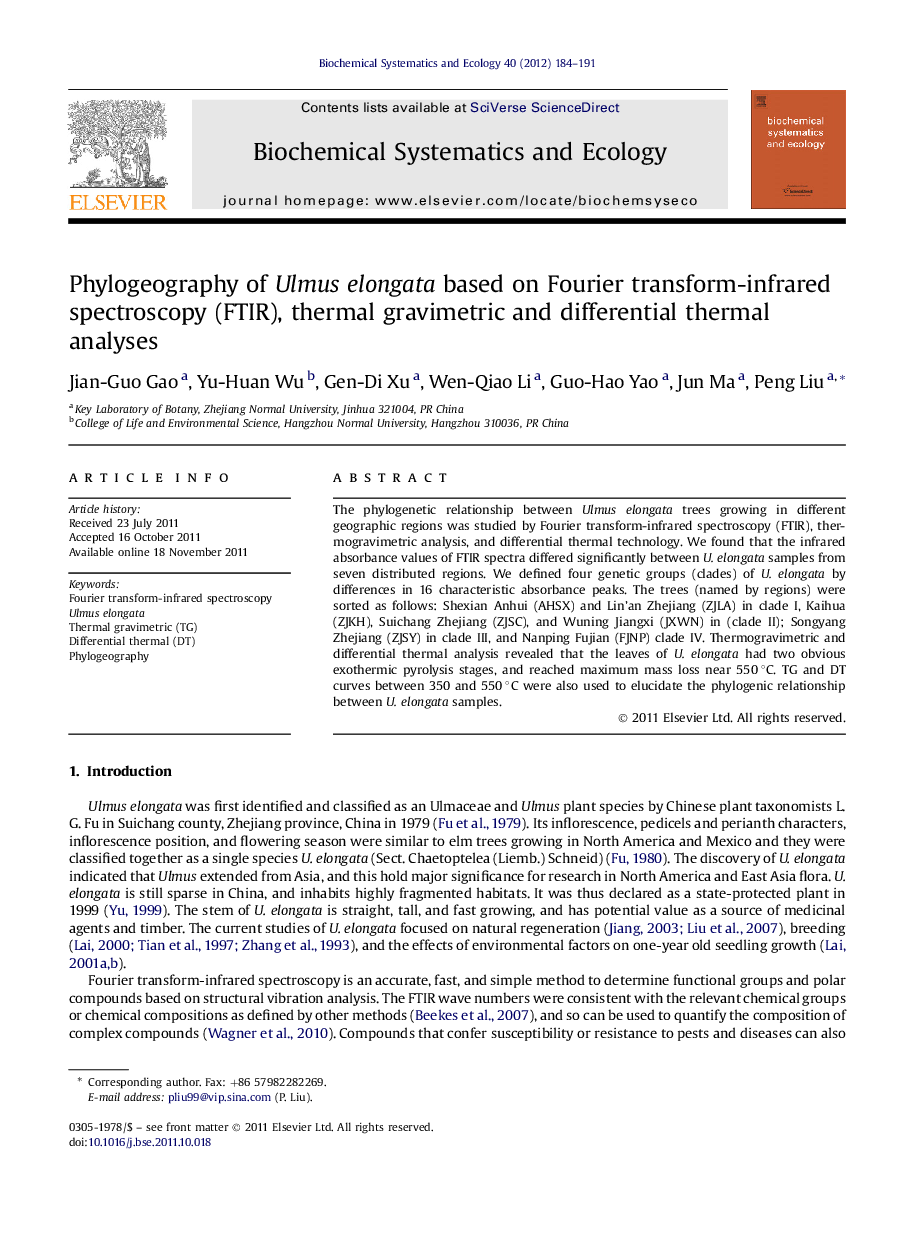| Article ID | Journal | Published Year | Pages | File Type |
|---|---|---|---|---|
| 1351864 | Biochemical Systematics and Ecology | 2012 | 8 Pages |
The phylogenetic relationship between Ulmus elongata trees growing in different geographic regions was studied by Fourier transform-infrared spectroscopy (FTIR), thermogravimetric analysis, and differential thermal technology. We found that the infrared absorbance values of FTIR spectra differed significantly between U. elongata samples from seven distributed regions. We defined four genetic groups (clades) of U. elongata by differences in 16 characteristic absorbance peaks. The trees (named by regions) were sorted as follows: Shexian Anhui (AHSX) and Lin’an Zhejiang (ZJLA) in clade I, Kaihua (ZJKH), Suichang Zhejiang (ZJSC), and Wuning Jiangxi (JXWN) in (clade II); Songyang Zhejiang (ZJSY) in clade III, and Nanping Fujian (FJNP) clade IV. Thermogravimetric and differential thermal analysis revealed that the leaves of U. elongata had two obvious exothermic pyrolysis stages, and reached maximum mass loss near 550 °C. TG and DT curves between 350 and 550 °C were also used to elucidate the phylogenic relationship between U. elongata samples.
Graphical abstractFigure optionsDownload full-size imageDownload as PowerPoint slideHighlights► The phylogenetic relationships between Ulmus elongata trees are studied. ► Four genetic groups are obtained based on 16 characteristic absorbance peaks. ► Annual average temperature is vital for determining the foliar chemical compositions.
